There are three living species of thresher shark, all of which are large carnivores. All species are large sharks, and the biggest of the three can reach lengths up to 20 ft. or so. Their primary defining characteristic is an extremely long upper portion of their tail fins. In some animals, the tail fin can actually be as long as the entire body of the shark! Read on to learn about the thresher shark.
Description of the Thresher Shark
The easiest way to recognize a thresher shark is their excessively long tail. Only the upper half of the tail fin is long, the lower is much more proportional to the size of the shark. Each species is slightly different, but all have this unique characteristic.
The smallest species, the pelagic thresher, is usually around 10 ft. long. The largest species, the common thresher, can measure up to 20 ft. long. The different species and individuals range in color from brown to dark green and blue.
Interesting Facts About the Thresher Shark
These interesting sharks really are unique. No other shark species have such an extensively long tail fin, and that is only the beginning when it comes to fascinating things about these sharks!
- Caudal Fin – The odd-looking tail fin, also known as caudal fin, of the thresher shark really is unique. Scientists call this tail shape heterocercal, where the top side of the tail is longer than the bottom. Heterocercal tail fins or not unique in sharks, many species have them, but not nearly to the extreme that thresher sharks do!
- Form and Function – Unlike many other exaggerated traits in animals, thresher sharks’ tails actually have a distinct purpose. The sharks slice their tail through the water to hit fish, stunning them and making them easier to capture. They will also slap the water with their tails to achieve the same effect.
- Four Species – Each species of thresher shark is slightly different, but they all possess this unique tail fin. The largest species is the common thresher, followed by the bigeye thresher, which gets its name from its unusually large eyes. Last is the pelagic thresher, which still measures in at a rather large 10 ft. long!
- Jump for Joy – These sharks are one of the few species that will leap out of the water. Breaching, or jumping out of the water, is a behavior most commonly known from dolphins and whales. The sharks will jump all the way out of the water, long tail and all. Scientists think this behavior stuns or confuses the shark’s prey.
Habitat of the Thresher Shark
All three species of thresher sharks live in the open ocean, making them pelagic species. They will occasionally swim into shallow waters or areas very close to shore, but this is relatively uncommon.
These sharks prefer open ocean habitats over continental shelves, coastal waters, but far from shore. Most of the time they will venture no deeper than 1,600 ft. deep, but people have occasionally seen them in deeper waters.
Distribution of the Thresher Shark
Different species reside in different areas, though some ranges do overlap. The common species ranges off the coasts of North America, and in the North Pacific Ocean near Asia. Bigeye and pelagic threshers favor the central and western Pacific Ocean, and bigeyes also live in the Mediterranean Sea.
Diet of the Thresher Shark
These sharks feed primarily on schooling fish, which are easy prey to stun. They eat mackerel, young tuna, squid, cuttlefish, and bluefish. While it is less common, they will also feed on seabirds, crabs, lobsters, and shrimp, when given the opportunity. When feeding, they use their long tail to stun fish prior to eating them.
Thresher Shark and Human Interaction
Like other large shark species, thresher sharks do not reproduce very quickly. This makes them particularly vulnerable to overfishing, and humans have been depleting all three species in this way.
Because of their dramatic breaching behavior, they are popular catches for sport fishing. However, the real danger to these sharks is capture for meat, liver, and shark fin soup. The IUCN Red List recognizes that the common, bigeye, and pelagic species are all Vulnerable.
Domestication
Humans have not domesticated thresher sharks in any way.
Does the Thresher Shark Make a Good Pet
No, thresher sharks do not make good pets. Even the smallest species can grow over ten feet long, so they require very large aquariums to house them. It would be virtually impossible to own any species of thresher shark as a pet.
Thresher Shark Care
Like most other large shark species, thresher sharks are not good candidates as permanent residents. Just like great white sharks, they do not do well and require very large habitats to survive.
No thresher sharks currently live in any aquariums. If they did, it would be easy to replicate their diet, but not to prevent collisions with the sides of the tank. This is the primary concern with keeping large, pelagic sharks.
Behavior of the Thresher Shark
Most individuals are solitary in nature, and will both hunt and rest alone. However, some are occasionally recorded hunting in small packs. They might also congregate around a food source, like a bait ball, to feed on schooling fish. While hunting, they will exhibit the unique behavior of breaching out of the water. The sharks are also migratory, and will follow schools of prey.
Reproduction of the Thresher Shark
Like many other large shark species, these sharks are ovoviviparous. Ovoviviparous sharks have internal fertilization and develop the eggs until hatching within their own bodies, then give “live” birth. While in the womb, the baby sharks will feed on unfertilized eggs to continue growing.
Most species will birth between 2 and 4 young sharks, called “pups.” It can take anywhere from 7 to 14 years for the sharks to reach sexual maturity and reproduce themselves.

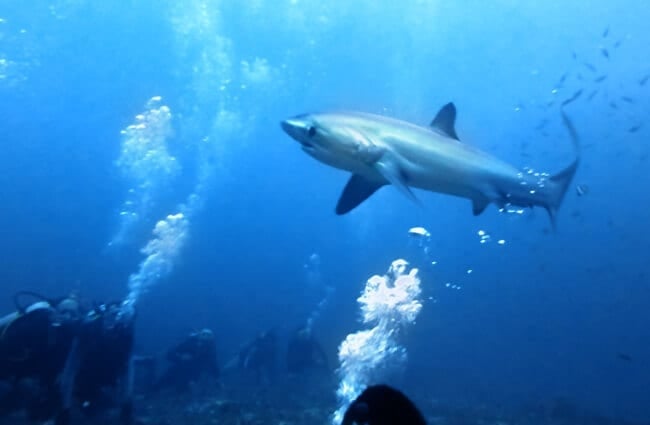


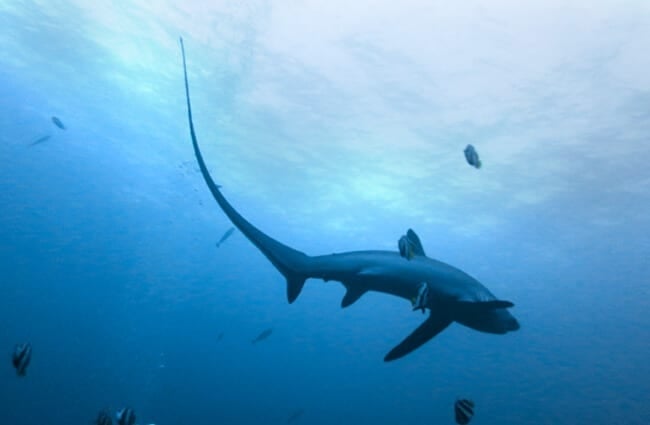


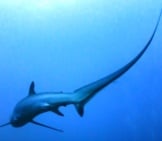

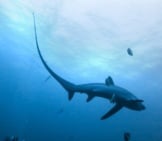
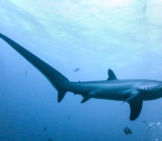
![Red Angus Closeup of a beautiful Red Angus cowPhoto by: U.S. Department of Agriculture [pubic domain]https://creativecommons.org/licenses/by/2.0/](https://animals.net/wp-content/uploads/2020/03/Red-Angus-4-238x178.jpg)












![Red Angus Closeup of a beautiful Red Angus cowPhoto by: U.S. Department of Agriculture [pubic domain]https://creativecommons.org/licenses/by/2.0/](https://animals.net/wp-content/uploads/2020/03/Red-Angus-4-100x75.jpg)

